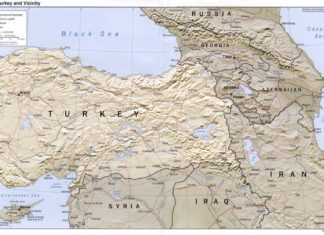By Edmond Y. Azadian
When we characterize the Middle East as a powder keg which might explode at any moment, we are using a cliché commonly cited in today’s political discourse.
As the tensions rise there, the ramifications reverberate around the world. At the present time, when motorists pay through their noses at the gas pump, they seldom realize that the fluctuations in oil prices correspond with the war rhetoric in and about the Middle East. The news media has refined its brainwashing capacity to such a sophisticated degree that the average citizen is at the mercy of demagogues.
The concern over Iran’s nuclear prospects has contributed to the tensions in the Middle East, especially at the prodding of Israeli Prime Minister Benjamin Netanyahu, who has been pushing the Obama administration to draw the “red line” in front of Tehran, threatening military action, if Iran crosses that red line.
The Israeli prime minister’s insistence went so far recently that an op-ed piece in the New York Times advised President Obama to draw a “red line” in front of Netanyahu to stop him from meddling in the US presidential politics.
After Republican candidate for President Gov. Mitt Romney’s pilgrimage to Israel and his pledge of complete surrender (Jerusalem as the capital of Israel, Palestinians inferior to Israelis), hopes were raised within the Israeli leadership that the Obama administration would rush to match Romney’s rhetoric, courting the support of the Jewish voters. A contender may promise the sky, yet the leaders in charge of a country’s destiny cannot act recklessly. Given the continuing bloodshed in Iraq and Afghanistan, when a combined number of 6,500 US troops have been sacrificed with more than 50,000 veterans disabled or gripped by suicide fever, the Obama administration reacted more responsibly, staying the course and insisting that economic sanctions had been working in dampening Iran’s nuclear hopes.









